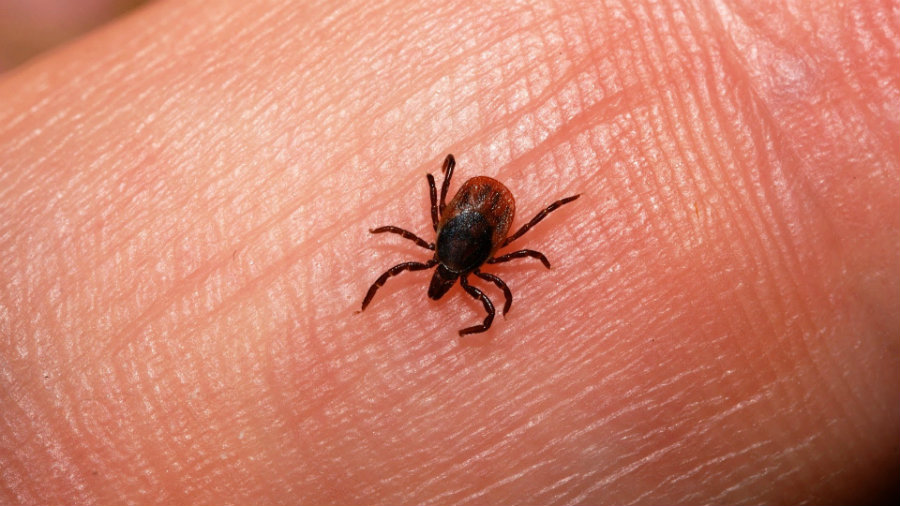
Upper midwestern and northeastern United States Majority of cases are reported in the Northeast and Great Lakes area reported in every state except Montanaīlack-legged or deer tick (I. Limited to Western hemisphere all states except Maine, Hawaii, and Alaskaīlack-legged or deer tick (Ixodes scapularis) Recommended treatment for suspected tularemia is streptomycin or gentamicin given empirically before evidence of laboratory confirmation. Recommended actions to prevent tick-borne disease include avoidance of tick-infested areas wearing long pants and tucking the pant legs into socks applying N,N-diethyl- m-toluamide (DEET) insect repellents using bed nets when camping and carefully inspecting oneself frequently while in an at-risk area.Īntibiotic prophylaxis is not routinely recommended for a tick bite to prevent Lyme disease unless the risk of infection is high. Treatment with doxycycline (Vibramycin) or tetracycline is recommended for Rocky Mountain spotted fever, Lyme disease, ehrlichiosis, and relapsing fever.

Advising patients about prevention of tick bites, especially in the summer months, may help prevent exposure to dangerous vector-borne diseases.Īppropriate antibiotic therapy should be initiated immediately when there is suspicion of Rocky Mountain spotted fever, ehrlichiosis, or relapsing fever rather than waiting for laboratory confirmation. The same tick may harbor different infectious pathogens and transmit several with one bite. If no symptoms follow exposure to tick bites, empiric treatment is not indicated. In patients with clinical findings suggestive of tick-borne disease, treatment should not be delayed for laboratory confirmation. Treatment with doxycycline or tetracycline is indicated for Rocky Mountain spotted fever, Lyme disease, ehrlichiosis, and relapsing fever. Because 24 to 48 hours of attachment to the host are required for infection to occur, early removal can help prevent disease. Early, accurate diagnosis allows treatment that may help prevent significant morbidity and possible mortality.
#TICK DISEASES SKIN#
Various other rashes or skin lesions accompanied by fever and influenza-like illness also may signal the presence of a tick-borne disease.

A petechial rash initially affecting the palms and soles of the feet is associated with Rocky Mountain spotted fever, whereas erythema migrans (annular macule with central clearing) is associated with Lyme disease. It is important for family physicians to consider these illnesses when patients present with influenza-like symptoms. The current authorization extends until December 2022.Tick-borne diseases in the United States include Rocky Mountain spotted fever, Lyme disease, ehrlichiosis, tularemia, babesiosis, Colorado tick fever, and relapsing fever. The Working Group was authorized by Congress for a total of six years from the date that the Act became law. The first charter for the Tick-Borne Disease Working Group was approved by the Secretary of Health and Human Services on August 10, 2017, marking the official establishment of the Working Group within HHS.

The Working Group is required to submit a report every two years, starting in December 2018.
#TICK DISEASES HOW TO#
The focus of this effort is the development of a report to the Secretary of Health and Human Services and Congress on the findings and any recommendations of the Working Group for the federal response to tick-borne disease prevention, treatment and research, as well as how to address gaps in these areas. The Tick-Borne Disease Working Group was established by Congress in 2016 as part of the 21st Century Cures Act to provide subject matter expertise and to review federal efforts related to all tick-borne diseases, to help ensure interagency coordination and minimize overlap, and to examine research priorities. The number of new cases has been increasing in recent years, and the areas where ticks are found are expanding, which puts more people in more states at potential risk. According to the CDC, more than 300,000 new cases of Lyme disease are diagnosed each year. Lyme disease is the most common tick-borne disease, but there are at least 20 different infections that are transmitted by ticks in the United States. Tick-borne diseases are a serious public health problem.


 0 kommentar(er)
0 kommentar(er)
